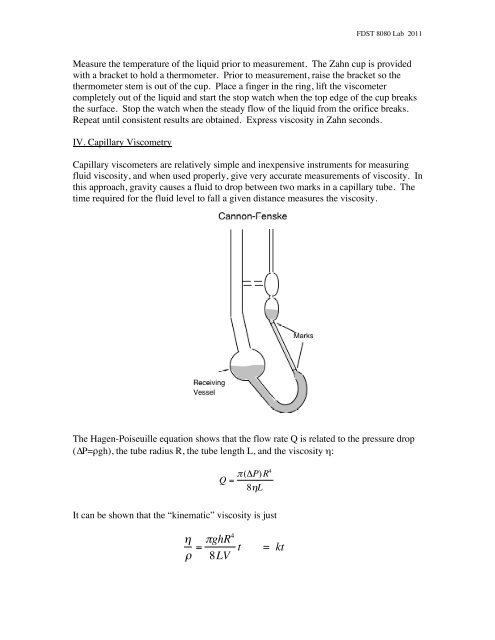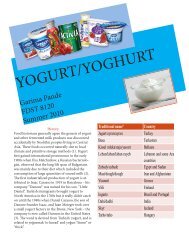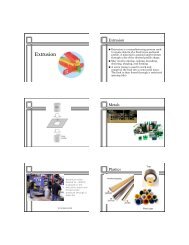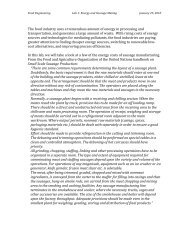Viscometry Lab.pdf
Viscometry Lab.pdf
Viscometry Lab.pdf
Create successful ePaper yourself
Turn your PDF publications into a flip-book with our unique Google optimized e-Paper software.
FDST 8080 <strong>Lab</strong> 2011<br />
Measure the temperature of the liquid prior to measurement. The Zahn cup is provided<br />
with a bracket to hold a thermometer. Prior to measurement, raise the bracket so the<br />
thermometer stem is out of the cup. Place a finger in the ring, lift the viscometer<br />
completely out of the liquid and start the stop watch when the top edge of the cup breaks<br />
the surface. Stop the watch when the steady flow of the liquid from the orifice breaks.<br />
Repeat until consistent results are obtained. Express viscosity in Zahn seconds.<br />
IV. Capillary <strong>Viscometry</strong><br />
Capillary viscometers are relatively simple and inexpensive instruments for measuring<br />
fluid viscosity, and when used properly, give very accurate measurements of viscosity. In<br />
this approach, gravity causes a fluid to drop between two marks in a capillary tube. The<br />
time required for the fluid level to fall a given distance measures the viscosity.<br />
The Hagen-Poiseuille equation shows that the flow rate Q is related to the pressure drop<br />
(∆P=ρgh), the tube radius R, the tube length L, and the viscosity η:<br />
Q = !("P)R4<br />
8#L<br />
It can be shown that the “kinematic” viscosity is just<br />
!<br />
" = #ghR4<br />
t = kt<br />
8LV





